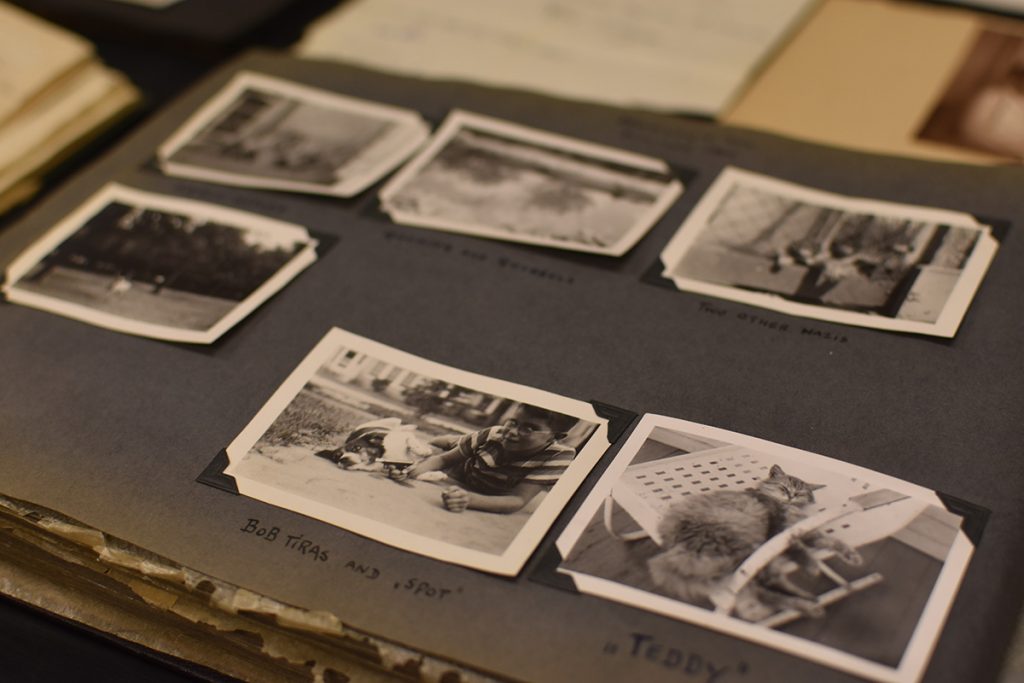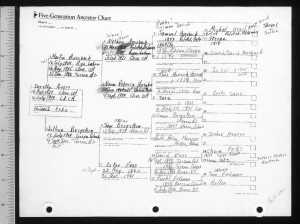Family Genealogy Projects While You #StayHome

Finding yourself at odds in our new reality? Looking for a meaningful project to occupy your time and your mind? Genealogical research can help establish routines, provide a sense of control, and lower stress, key steps in maintaining your mental and physical health.You can check out some helpful tips and resources for getting started with online genealogy that we shared on our Facebook page, and organize your research with the following tasks:
 Fix your family tree
Fix your family tree
Is your family tree a mere sapling stored on random sheets of paper? Create an online tree using one of the free online programs here. Already have an online tree, along with a pile of documents, notes, and photos that require new leaves? Update your tree with new ancestors and additional information.
Record family interviews
Do you find yourself missing members of your extended family? Involving them in this process allows you all to slow down, listen, learn from one another, and build deeper connections. Yes, this can work even for your tech-obsessed younger family members! Thanks to a plethora of recording apps, Skype, etc., you can conduct and record an in-person interview with anyone at any time. If you find yourself struggling to get the ball rolling, check out this tip sheet.

Get a handle on your family history documents, photos, and artifacts
- Locate & Sort
- List all the places you may have stored family history materials. Search each location and identify the relevant items. Once you have assembled your collection, sort your items by material type, such as papers, photos, etc. If this is impossible, create an inventory of types and locations. Take one type at a time, and decide which items have the greatest value to you; discard items that don’t fit your criteria. Sort the remaining items into categories, i.e. by family name or geographic location.
- Digitize
- Use a digital camera, phone, or scanner to create digital copies of your materials. Give each file a descriptive name and organize the files into folders based on the categories you created while sorting. Remember, digital files are not impervious to being lost or damaged! To preserve them, save all your files in three places, for example, on your computer, on an external hard drive and to the cloud. For more detailed instruction on digitizing items at home, visit http://digitalpreservation.gov/personalarchiving.
- Preserve & Organize
- Plan how and where you will store each material type. Never forget that choosing the appropriate storage space is the most critical step in this process! Ideally, your collection should be stored in a climate-controlled dark space, away from heat and water. Therefore, basements, attics, and storage units should be avoided. If possible, purchase professional archival-quality storage supplies. Gaylord and Hollinger Metal Edge are well-known archival suppliers. If these products are outside your budget, store your items flat and not packed too tightly in manila folders within cardboard boxes. Buffer photos and fragile items, like newspapers, with printer paper. Allowing airflow is key! Do not seal your boxes or use plastic sleeves, albums, binders, or containers. Further, do not use glue, tape and rubber bands to secure your materials, as these can destroy your collection. Finally, while organizing your photos, use a soft pencil to write the name of each person on the back; If possible, add the date and the location as well.
I hope this project can help you relax, recharge, and keep moving forward. For any questions, please email us at gi@cjh.org!
Good luck and stay safe!
-
Moriah Amit, M.S.L.I.S., Senior Reference Services Librarian, Genealogy Coordinator, Ackman & Ziff Family Genealogy Institute at the Center for Jewish History


